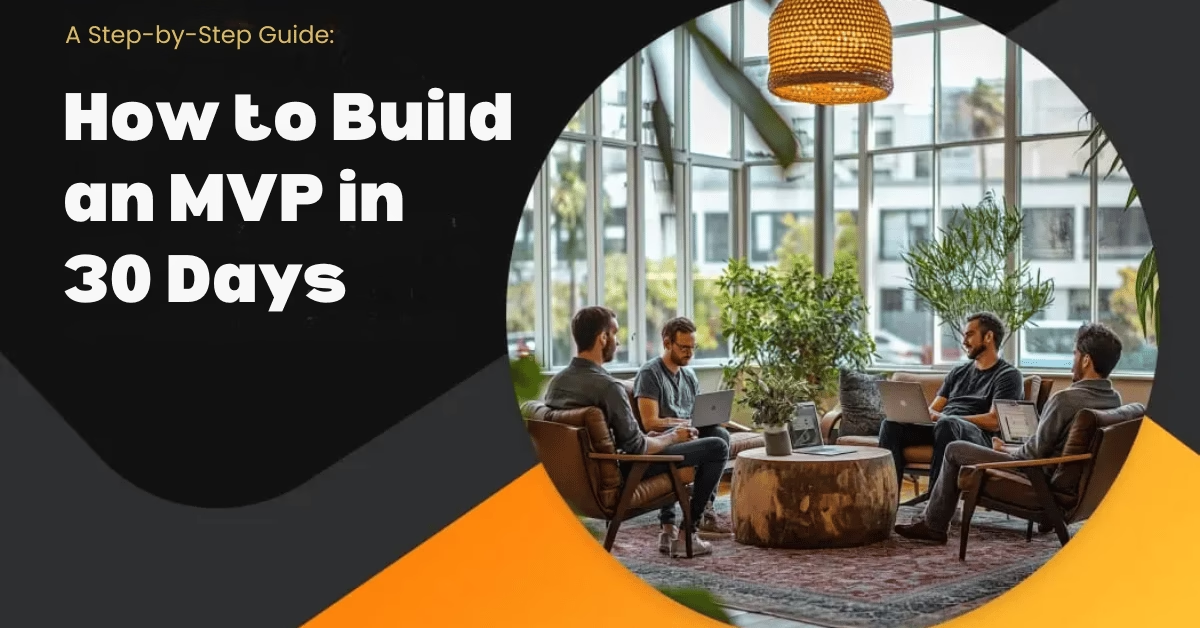If you’ve ever wondered how to build an MVP in 30 days, you’re not alone. Entrepreneurs everywhere are looking for faster ways to test startup ideas without burning months of time or draining their savings. The good news? You can absolutely build an MVP in 30 days and get your product into the hands of real users before your competitors even launch. All it takes is focus, a smart process, and the right tools
In this step-by-step guide, we’ll explore how to build an MVP in 30 days, why it matters for entrepreneurs, and the exact steps you can follow to validate your startup idea quickly
What is an MVP and Why Does It Matter?
When you build an MVP in 30 days, the goal isn’t to create a perfect product—it’s to create a simple version that solves one clear problem for your target audience. An MVP, or Minimum Viable Product, is essentially the core foundation of your idea. Instead of launching with 50 features, you focus only on the essentials that deliver immediate value
Think of it as building the skeleton of a house before decorating the rooms. You just need it strong enough to test if people want to live there
Benefits of Building an MVP in 30 Days
When you build an MVP in 30 days, you put yourself in a strong position to validate ideas fast. The benefits include:
Reduce risk and cost
You avoid spending months of time and money on features that may not matter
Get real user feedback quickly
Within 30 days, you’re already testing with actual customers instead of guessing
Beat competitors to market
Speed is often the key to gaining early traction
Focus on essentials
A tight timeline forces you to cut fluff and keep only features that truly solve the problem
Step 1: Define the Problem Clearly
The first step to build an MVP in 30 days is knowing what problem you’re solving. If your product doesn’t tackle a real pain point, no amount of coding will save it. For example, Uber’s early MVP didn’t have carpooling or driver ratings. It simply let people book a ride with one tap
Step 2: Identify Your Target Audience
Your MVP is not for everyone. To build an MVP in 30 days, you need to know exactly who your early adopters are. Create a simple persona describing their age, profession, frustrations, and goals. Every design decision should connect back to them
Step 3: Outline the Core Features
When you build an MVP in 30 days, you can’t afford feature overload. Here’s a quick way to prioritize:
- Write down every feature idea
- Circle the ones that directly solve your user’s problem
- Cut the rest for future updates
A food delivery MVP, for instance, may only need account sign-up, menu browsing, and checkout. Advanced features like rewards programs can wait
Step 4: Map the User Journey
A clear journey map is vital when you’re trying to build an MVP in 30 days. Visualize how users will flow through your app or product:
- Open the app
- Create an account
- Browse available options
- Make a choice
- Complete a purchase
This keeps your product simple and user-friendly
Step 5: Choose the Right Tech Stack
To build an MVP in 30 days, speed trumps perfection. Consider:
- No-code platforms like Bubble or Glide for rapid deployment
- Frameworks like React Native or Flutter for cross-platform apps
- Pre-built templates to cut development time
The faster you ship, the sooner you validate
Step 6: Design for Simplicity
Your MVP should be clean and easy to use. To stay on track when you build an MVP in 30 days:
- Use minimal layouts
- Stick to intuitive navigation
- Avoid overwhelming users with too many options
Tools like Figma help you design quickly before coding
Step 7: Build a Prototype
Prototyping is critical when you build an MVP in 30 days. A clickable prototype in InVision or Figma lets you:
- Simulate user flows
- Share with test users
- Collect feedback before investing in full development
Step 8: Develop the MVP
Now it’s time to actually build your MVP in 30 days. Stay disciplined by:
- Breaking the work into weekly sprints
- Assigning roles if you have a team
- Sticking strictly to your core features
Remember, done is better than perfect
Step 9: Test Early and Often
The smartest way to build an MVP in 30 days is to test constantly. Instead of waiting for the final day:
- Share early builds with small test groups
- Watch how users interact
- Collect feedback with surveys
- Fix issues on the go
Step 10: Launch to a Small Audience
When you build an MVP in 30 days, your first launch doesn’t need to be massive. Try:
- A beta release with a small user base
- Launching in one region first
- Engaging niche online communities
This allows you to refine before scaling
Step 11: Measure Success with Metrics
After launch, measure how well your MVP performs. Useful metrics include:
- Number of sign-ups or downloads
- Active users
- Retention rates
- Conversion rates
- Feedback scores
These numbers show whether your MVP is gaining traction
Step 12: Iterate Based on Feedback
Building doesn’t stop at 30 days. After you build an MVP in 30 days, the next phase is iteration. Based on real feedback, you can:
- Fix usability issues
- Add new features gradually
- Pivot if needed
This is how your MVP grows into a full product
Common Mistakes to Avoid When Building an MVP
Even if you build an MVP in 30 days, you could fail by:
- Adding too many features
- Ignoring customer feedback
- Focusing too much on design instead of functionality
- Missing deadlines due to poor planning
Best Practices for Building an MVP in 30 Days
Keep these best practices in mind:
- Solve one problem really well
- Use tools and templates to save time
- Test continuously
- Align your team daily
- Focus on validation, not perfection
If you want to build an MVP in 30 days, the secret is focus. Define the problem clearly, know your audience, prioritize only the most important features, and test relentlessly. By the end of 30 days, you’ll have a working product that gives you real market insights—without wasting months of effort. Remember, your MVP is not the final destination but the first big leap toward building a scalable business
FAQs
With no-code tools, it can cost as little as a few hundred to a few thousand dollars
Not necessarily—many no-code platforms make it possible for non-technical founders
Yes, but staying disciplined with scope and time management is crucial
Overloading it with too many features instead of focusing on the core problem
You test, measure feedback, iterate, and then start scaling based on validated demand












